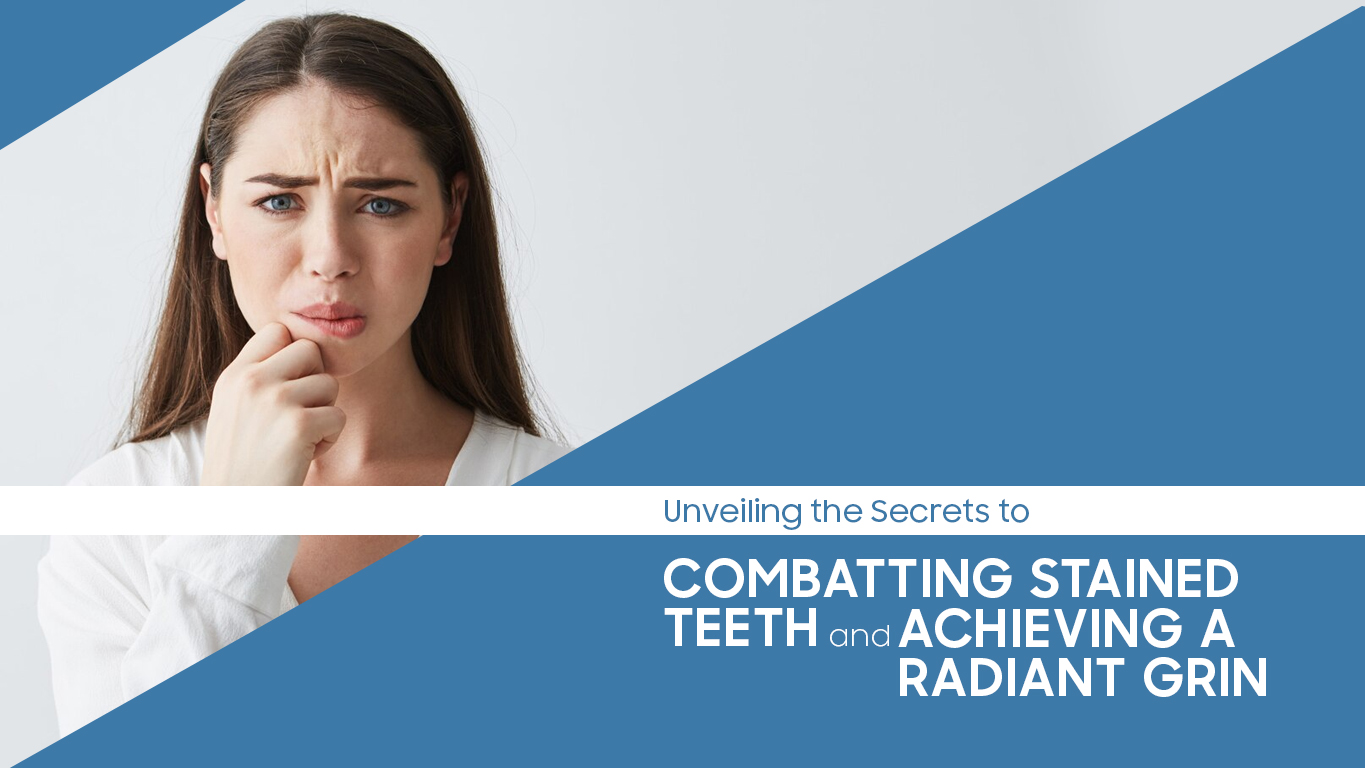Unveiling the Secrets to Combatting Stained Teeth and Achieving a Radiant Grin

Over time, your pearly white teeth can become stained teeth and discolored from food, drinks, smoking, medications, injuries, genetics, and more. However, there are effective ways to combat unsightly stains and restore the natural brilliance of your smile. Understanding the different types of stains and utilizing professional dental treatments and at-home care can help you put your best grin forward.
-
Extrinsic Stains
Extrinsic stains affect the enamel, the outermost protective layer of your teeth. Common culprits of extrinsic discoloration include coffee, tea, red wine, dark sodas, juices, tobacco, certain spices, and overly pigmented foods like blueberries. As these intensely colored substances interact with your teeth repeatedly, stubborn surface stains build up. The good news is extrinsic stains respond very well to whitening treatments.
-
Intrinsic Stains
Intrinsic stains are stubborn discolorations that have penetrated beneath the protective enamel layer to the softer, porous dentin tissue inside your teeth. Unlike surface stains affecting enamel, intrinsic stains cannot simply be scrubbed or polished away. They appear as an unnatural yellowish, brownish, or greyish shade due to chromogens penetrating deep within the tooth’s inner structure over an extended period. Common causes of troublesome intrinsic staining include antibiotic or antihistamine medications, high fluoride intake, tooth injury, early illness affecting enamel development, genetics, cavities, trauma, root canal issues, and natural aging. Though more challenging to treat, today’s concentrated at-home and in-office whitening products, specialized lights, and repetitive professional procedures can gradually lift intrinsic staining for brighter smiles. Dental veneers or bonding resins can beautifully mask discoloration by applying a natural, opaque covering to the visible tooth surface for instant cosmetic improvement.
Removing Stains Professionally
Fortunately, today’s dentistry offers easy, effective ways to banish unsightly stains through in-office whitening treatments. Your dentist applies a high-concentration hydrogen or carbamide peroxide gel to your teeth and uses specialized lighting or lasers to accelerate the lightening process. These professional procedures provide the fastest, most dramatic whitening results in just one 30 to 60-minute session. However, the effects will gradually fade over one to three years of normal staining. Many dental offices also offer custom-fitted take-home whitening trays with lower-concentration gels for gradual, longer-lasting brightening for days or weeks.
Combatting Stains at Home
While professional whitening yields the best results, you can help maintain a radiant, stain-free grin between dental visits with smart lifestyle habits and daily care. Here are some useful at-home stain-fighting tips:
- Brush twice and floss once daily
- Swish with an antibacterial, whitening mouthwash
- Drink dark beverages with a straw
- Limit stain-causing foods and beverages
- Quit smoking and other tobacco products
- Use non-abrasive whitening toothpastes
- Try whitening strips, gels, or trays
Conclusion
No matter what caused your smile to lose its luster, today’s dentistry makes it easier to uncover your brightest, most confident grin. By understanding the sources of stains and utilizing professional treatments, whitening products, and preventive daily care, you can keep your teeth naturally white and healthy. Please speak with our dentist at Springvale Dental Clinic to create a customized teeth whitening plan. With the right strategies, you’ll smile wider and brighter quickly.



